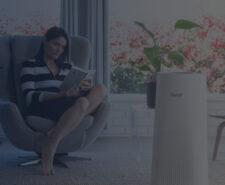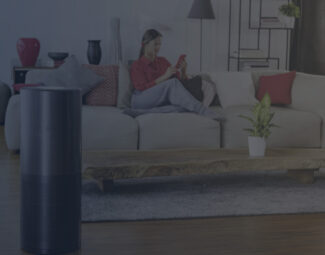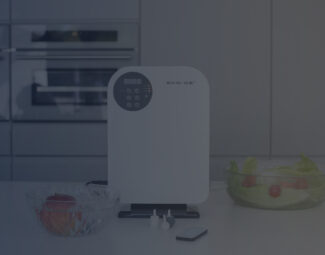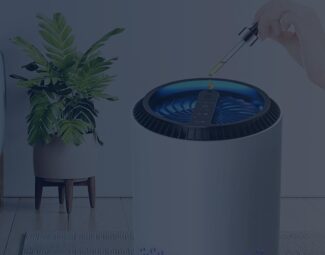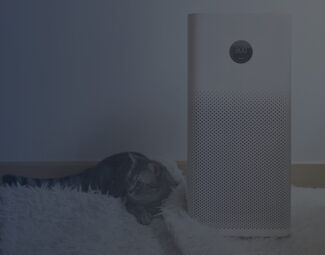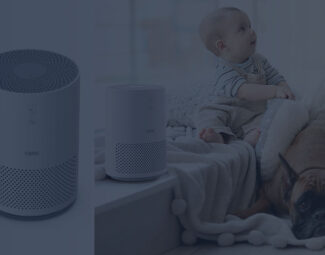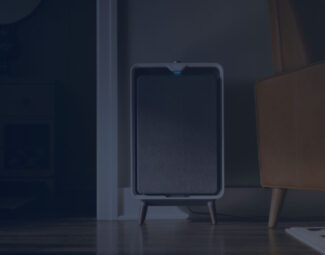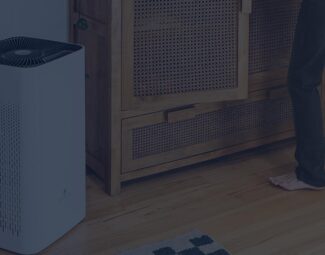T he idea of purchasing an air ionizer is quite tempting. You have heard that they are efficient in removing particles but cheaper to maintain than filter air purifiers, which require you to replace the HEPA and the activated carbon filter periodically. Some people choose them as a defense system against allergies while others are over the roof for their sleek design.
But are they safe?
This question isn’t baseless. A large controversy arose around these devices due to their production of ozone, dividing the opinions in two. While most manufacturers claim that their units will not affect human health in any way, some studies have shown that in some cases the level of ozone is higher than it should be and can pose a threat.
In this article, we will analyze the functioning of ionizers and discuss the controversy, providing you with all the information you need to make an informed decision. So, stay with us and find out if it is worth investing in an ionic air purifier.
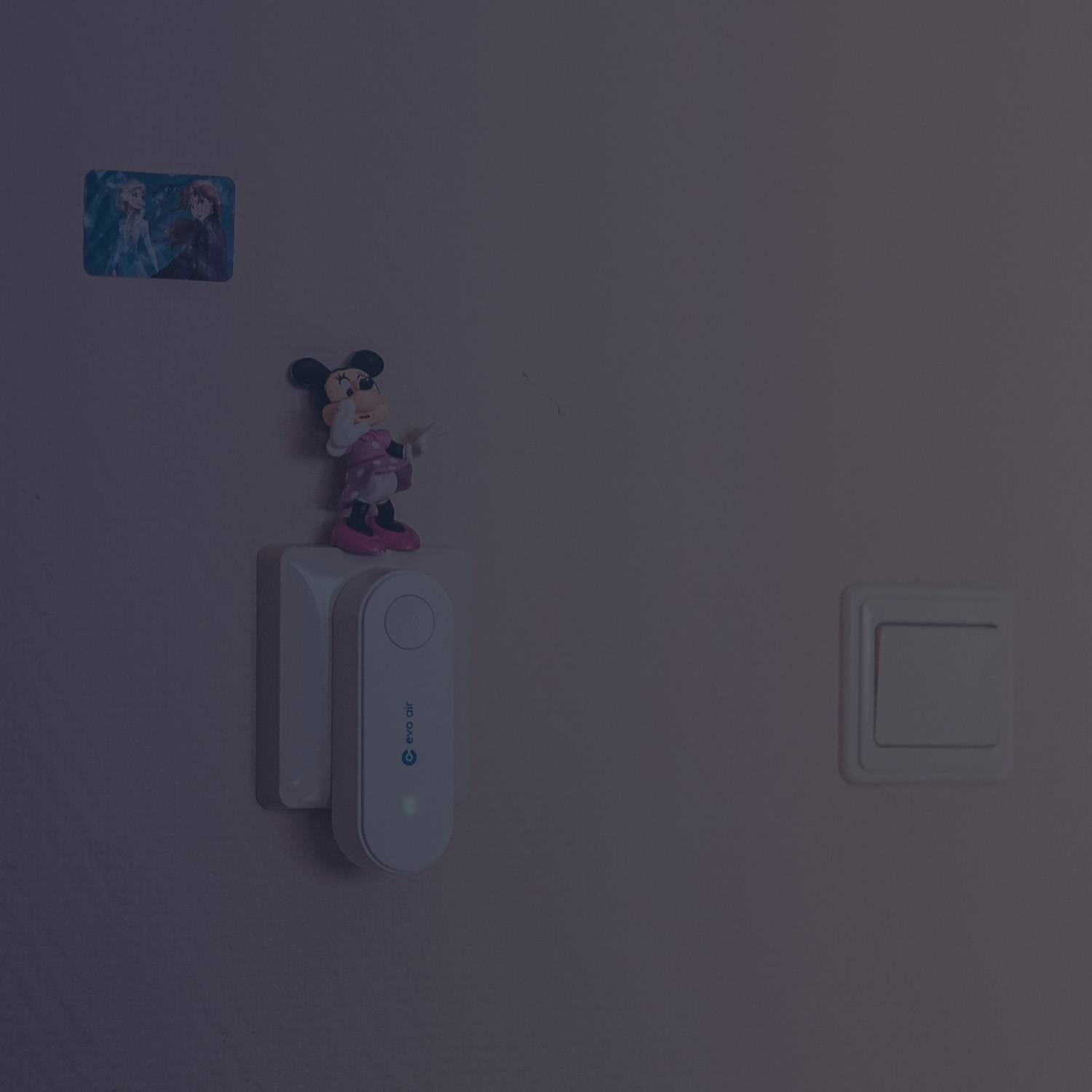
Plug-In Air Ionizer in Child’s Room
How to air ionizers work?
Before explaining the whole process, which is not as complicated as it may seem, we must first understand what ions are and how they work.
Most ionizers create negative ions through a method called corona ionization. They use electrical current to ionize the air and make it bipolar. A high-voltage current formed of negatively-charged electrons is transmitted to a needle or a prong. When this happens, the phenomenon of electric repulsion appears and the negative ions need to leave the prong and find atoms with a positive charge to attach to them. They find them in the particles floating freely into the air like pollen, dust, dust mites, or animal hair and dander. When the ions attach to these allergens, they alter their weight, making them heavier. This is enough to drag them to the ground and out of the air and your breathing system.
Is Breathing Ionized Air Safe?
Ionization is a natural process that happens in nature. In fact, it is nature’s way of cleaning the air of pollutants. If the level of ions is normal, the area will be less polluted and the air fresher. Even indoors, when an ion generator is used, the process remains the same, with no repercussions on human health. On the contrary, some people reported that this air purifying technology had benefits on their state of spirit, making them feel more energic and optimistic. It is the same effect we feel when we found ourselves in a mountain area where the air is clean and charged with negative ions.
The benefits:
- They remove allergens - Dust particles, pollen, pet dander, basically all contaminants down to 0.1 microns will be dragged to the floor or gathered into a collection plate, where they can no longer be inhaled
- Improve sleep - Negative ions influence the overall mood, inducing a state of calm that favors good sleep
- Help with depression - When you are feeling depressed, it is always a good idea to take a vacation in a mountain area, where fresh air and rest can help you bounce back. A similar effect is produced by the cloud of negative ions that are released into your home by this device.
The drawbacks:
- One of the disadvantages is that the pollutants aren’t truly captured. They will scatter all around the room, covering the floor, furniture, and walls. This means that if you step on them or touch them, they will easily become airborne again. Not a great deal for asthma and allergy sufferers, who will benefit better from the system of a filter air purifier, which keeps the contaminants inside and can ensure a safe atmosphere all day long.
- Even if some companies claim that their products can fight mold, this is highly improbable. They can have an action on the spores but are not as effective as a device that uses a HEPA filter. Moreover, no air purifier can remove mold. You will need to clean the place and sanitize it in order to escape infestation.
- Another large disadvantage is the presence of ozone. It isn’t released in high quantities, as in the case of an ozone generator, which uses it as its weapon against microorganisms and mold, but here, ozone is a secondary product, which cannot be avoided.
What Is Ozone?
We’ve all heard about the ozone layer which is getting thinner and thinner, turning into a problem that will affect us in the future. But the truth is that ozone should remain in the Earth’s upper atmosphere, where it belongs.
Definition: Ozone is a highly reactive gas that. Unlike O2, which has two molecules of oxygen, ozone is formed of 3 molecules.
Ozone can be found at ground level, but it is dangerous for people, especially if it is inhaled in high quantities or the time of exposure is long. It is used in some purification technologies for water and air and has been used in medical units to kill bacteria and germs.
In general, ozone generators should be run when there’s no person in the room. They are excellent means to fight mold and microorganisms in greenhouses, as they don’t affect the plants. At the end of the sanitation session, a period of a few hours is required for the ozone to turn back into oxygen.
However, with ionizers, the ozone is constantly released while the device is running. It is true that the quantity is smaller, and if the optimal values are not overcome, it won’t affect health in any way. But this is not always the case.
Ozone production – Is there a safe level?
- Ozone levels from 0 to 50 ppb: Safe level of ozone. It will not affect health in any way. In the U.S., the rule is that devices that produce over 50 ppb of ozone cannot be commercialized.
- Ozone levels from 51 to 100 ppb: Moderate risk. It can affect sensitive people by triggering allergy symptoms or asthma attacks. It is recommended to avoid ionizers that release this amount of ozone, especially if they are going to be used all day long, as the exposure time is too long.
- Ozone levels from 101 to 200 ppb: Unhealthy, risky value. Asthma and allergy sufferers may experience aggravated symptoms, while long exposure can lead to the emergence of effects in all individuals. This range is already alarming and contact with ozone, in this case, should be avoided.
- Ozone levels from 201 to 400 ppb: High risk. All individuals should avoid exposure as it can cause not only aggravated symptoms but cause permanent diseases, including cancer.
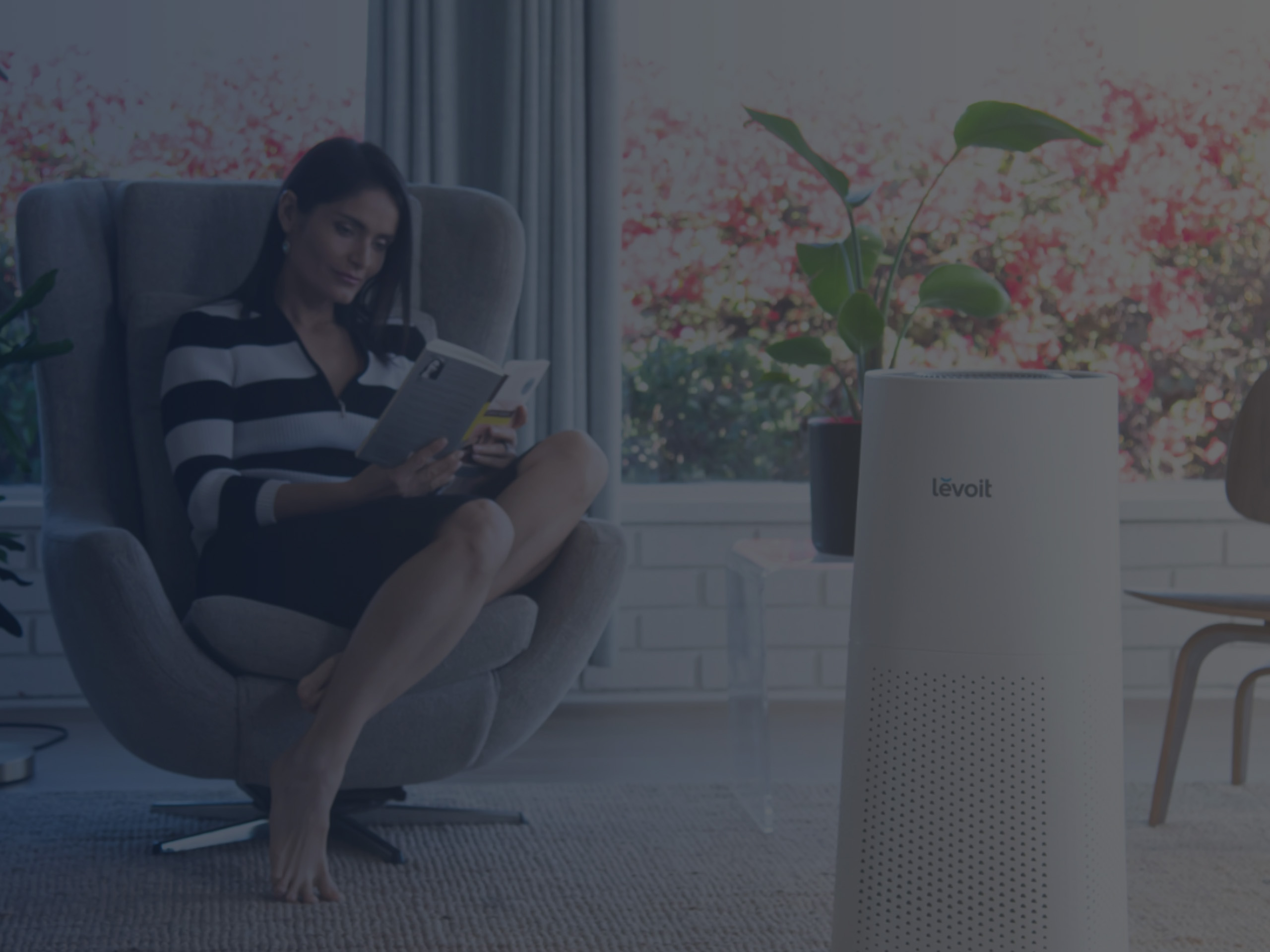
Woman Reads a Book while Air Ionizer Cleans Indoor Air
How can ozone affect your health?
The way ozone acts upon the human body is primary by entering the airways and causing the muscles in the breathing system to contract and entrap air in the alveoli. This process can have milder or more aggravated symptoms, depending on the level and length of exposure. Here are some of the most common effects:
- Difficulties in breathing
- Shortness of breath
- Pain when breathing
- Scratchy and sore throat
- Coughs
- Inflamated airways
- Permanent damage of the airways
- Aggravated allergy symptoms and more often asthma attacks
- Bronchitis and other lung illnesses, including more often lung and airways infections
In some cases, the ozone can continue to affect the organism even when the symptoms aren’t present anymore. It has been linked to chronic obstructive pulmonary disease and even cancer.
Do Ionizers Produce Dangerous Levels of Ozone?
Most brands claim that their devices release under 50 ppm of ozone, which is considered a safe value. Some models even come with sensors that monitor the level of ozone that is being released and alert you if it overcomes the safe limit. However, the road to today’s regulations was paved with a famous lawsuit.
The Ionic Breeze Controversy
Back in the 1990s, Sharper Image, a company specialized in manufacturing air purification systems, began to sell a line of air ionizers called Ionic Breeze. They invested a lot in commercials and managed to sell a lot of their devices, as they turned very popular among buyers. They were among the first companies to provide mass education about indoor air pollution and the importance of breathing fresh air indoors.
Nonetheless, Customer Reports performed a test in 2005 on these products, discovering that they released a dangerous level of ozone, a piece of information that was kept secret by the company. Apart from that, they accused Sharper Image that their products are not as efficient as they claimed, having a rather low CADR and being incapable of facing the contaminants in a normal-size room.
The company lost the suit and in 2008 went bankrupt. However, this incident pushed the U.S. Environmental Protection Agency to start evaluating air purifiers and creating standards for ozone exposure. So, you should look if the ionizer has been approved by EPA. Thus, you can rely on it not to harm your health.
Air Ionizer Frequently Asked Questions Answered
1. Are air ionizers safe for babies?
Although ionizers that follow EPA regulations don’t pose a risk to adults’ health, ozone, even in low quantities can affect children by irritating their airways and aggravating symptoms like congestion or allergies. In this case, it is recommended to choose an air purifier with a HEPA filter, which is safer and more effective against indoor air pollution.
2. Are air ionizers safe for pets?
Even when respecting governmental standards, these devices can still release too much ozone to affect your pets, especially if a bird or a small animal is keeping you company. Therefore, for pet hair and dander removal, you should choose an alternative, which, besides the mandatory HEPA filter, could include a charcoal layer that can remove odor as well.
3. Is ozone safe for asthma?
As explained, ozone can be dangerous in high quantities, but today’s ionizers need to follow regulations in order to be considered safe for selling. The amount released by them is usually harmless, but it could affect to a certain degree asthma sufferers. If you are one of them, it is better to avoid these devices and opt for a filter model specialized in fighting allergens. It will provide you the certitude that the particles, once collected, won’t end up again in the air.
4. Do ionizers kill viruses?
The answer is no. But they can help reduce the spreading and have a good action against bacteria. What they do is drag the viruses to the ground and in some cases deactivate them, so they diminish the risk of them getting inside your breathing system. Nevertheless, surfaces should be carefully disinfected, as they remain ways of transmitting viruses.
5. Do ionizers help with allergies?
Yes, they do. This is their primary purpose. To remove allergens from the air and reduce their effect on the human body. However, the dust gathering on the floor and not being contained is still a problem for allergy sufferers.
6. Do they kill mold?
No. They will reduce the spreading of mold spores, but they have no effect on the mold growing on the walls.
Bottom Line
If you have gotten to this point, you know now everything that is to know about ionic air cleaners. You have learned that they are a good choice in some cases, but it is better to go for a filter system if you have kids or pets. At the same time, you can read technical specifications now and check if your unit represents a health risk. Furthermore, based on the information in our article, you can compare products and make an informed decision.

